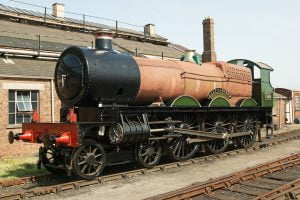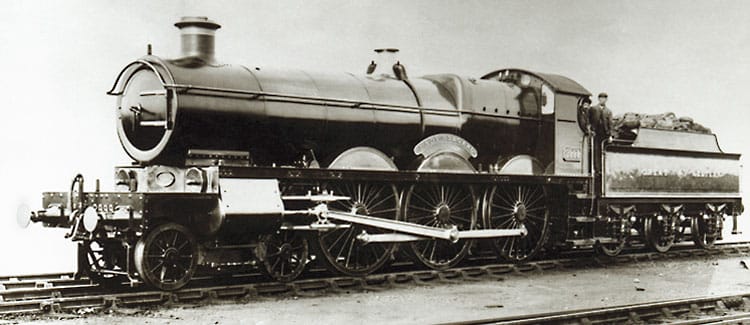With the success of the first article, here’s the next installment, where we’ll look into the background, the project’s aim and recent progress of The Saint Project (2999 “Lady of Legend”).

Background
The Great Western Railway’s (GWR) Saint class was developed after three prototypes had been built. These were No. 100, 98 and 171 built in February 1902, March 1903 and December 1903 respectively. These were built in order to test the design and measurements of various components until Churchward (Chief Mechanical Engineer (CME) of the GWR) finally settled on the design of No. 171 to base the production series of the Saint class. Production started with No. 172 “Quicksilver” (later 2972 “The Abbot”) in February 1905 and ended in April 1913 with the construction of 2955 “Tortworth Court”. In total, 77 Saints were built.
The Saint’s design meant they were ideal for long-distance passenger trains over GWR lines, especially trains with several stops, as the Saints’ 2-cylinder and valve gearing allowed for faster acceleration than the 4-cylinder Stars. They were assigned to these duties until the introduction of the Castles class, which took over this work from the late 1920s onwards, leaving the Saints to take up more secondary service work.

The Saints were very influential on following the design of 2-cylinder locomotives by GWR, mainly the Hall, Grange, Manor, and Country. Despite this, as the Saints grew older and required heavy repair work, they were gradually withdrawn. The first class member to be withdrawn was 2910 “The Lady of Shalott” in October 1931 (2925 “Saint Martin” was the first member withdrawn technically, for the purpose of rebuilding into the Prototype Hall class locomotive. Renumber 4900, Saint Martin was withdrawn in April 1959). 2920 “Saint David” was the last member withdrawn, surviving until October 1953.
The Project
The idea of recreating a Saint originated in the early 1970s by the Great Western Society (GWS), based at Didcot. The project started with 4942 “Maindy Hall” being purchased from Barry scrapyard. This was planned to be used as a donor engine in the Saint Project. Sadly, the project came to a standstill and was dropped, as many people believed the scale of work required wasn’t able to be carried out, leaving little support for the project. However, this wasn’t the end of a new Saint being built.
After the successful restoration of King class No. 6023 “King Edward II”, which was completed by the GWS, confidence was restored in many people that the GWS’ could undertake the work needed to turn “Maindy Hall” into a Saint. This revived the Saint Project, into the project we know today.
The new project brought new aims with it. The original project aimed to create a Saint, but with ‘Holcroft Curves’ built into the frames.
These curves being at the front, the running plate curving down to buffer beam and beneath the cab, from the running plate down underneath the cab to the same level as the tender’s frame.

The revived project, which was launched in November 1995, will feature the square front drop ends and running plate stretching underneath the cab. The general specification of the new Saint project would be to the earlier productive series of Saints. This includes inside steam pipes, level reverse gear, straight-type frame, and top feed.
Progress on the saint
As of November 2017, the project is very advanced. Recent news can be found in my article here

It has been decided to number and name the new Saint 2999 “Lady of Legend”. The number has been chosen as its both distinctive and appropriate. The name was suggested in a competition and chosen by the judges.
All major parts, built new, include three sets of 6ft 8 1/2in and two sets of bogie wheels, cylinders and lever reverse. All necessary modifications to 4942’s frames have taken place. The boiler has been overhauled and should hopefully return to the frames soon.
As part of the revised project, 2999 is built to run in both 4-6-0 and 4-4-2 form. Many of the early Saints were built as 4-4-2. This was to compete more fairly against the French Compounds and to compare which wheel arrangement was superior.
If you would like to get involved with helping add the final work on 2999 or would like to know more information, please visit The Saint Project’s website here
When news is released about work carried out on 2999, here at RailAdvent, we will cover it as soon as possible. Stay tuned for our next article about another new build project (creating a lost class of loco).
- Visit the Saint Project Website
For more information





Responses
[…] The Saint Project (2999 “Lady of Legend”) – Project Information – RailAdvent […]